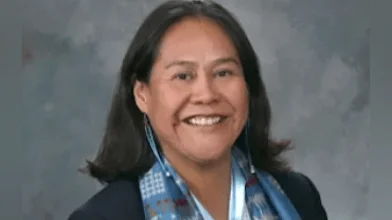I’ve said it before, I’ve said it again, again, and yet again and and I will continue to say that the Campus Model combined with enforcing laws on the books is THE ANSWER to both treating the true homeless in an effective, humanitarian way while at the same time protecting the safety of lawful citizens and integrity of businesses and residential communities.
Haven for Hope opened in San Antonio, Texas as the first Campus Model in the United States in 2010. Since then, it has become the model for a ‘one stop shop’ for homeless services throughout the United States. Haven for Hope has 30 service provider agencies on its 22 acre campus. Services include housing, food, job training, child care and even kennels for pets, among other services. Mental health and addiction treatment is done across the street at the Restoration Center. The unsheltered homeless population has decreased 15% since Haven for Hope started in 2010. And this 15% population has transitioned into permanent housing, with lives changed, becoming functioning members of society. The homeless will always be with us. We are not going to be able to solve all the homeless problems that exist today. But we can and MUST DO better.
In a nutshell, following are doable steps as a recommendation that can be immediately started and completed in a stepped-plan:
STEP 1: Find out (distinguish the difference through triage) who is REALLY on our streets.
Currently, the majority of homeless individuals on the streets of Albuquerque are transients. Transients (by definition) are non-local criminals who have chosen a lifestyle of syndicated (organized) crime. Neighborhoods that are plagued with transients are also plagued with high crime such as stabbings, home invasions, rapes, arsons, hazard excrement waste material, shop lifting, derelict buildings due to businesses and families deserting the area, etc.
Many on the streets of Albuquerque are mentally ill. Specialized 24hr court needs to be set up so that someone who is demonstrating clear symptoms of mental illness can be evaluated and appropriated directed for treatment at the Gibson Center. When a person is mentally ill and is not treated, many times the mental illness escalates to criminally mentally ill. Many on the streets of Albuquerque are drug addicts. Many on the streets of Albuquerque have addictions and are mentally ill, which is called dual diagnosis.
And this dual diagnosed group contains the criminally mentally ill. These are the folks who can be treated at the Gibson Center, an already existing and appropriately zoned facility.
Then there are the TRULY homeless. These local individuals are experiencing a situational crisis, and desperately want help. These individuals would be ‘housed’ in temporary quarters while they are assisted as they integrate into society. The optimal model for this kind of humane sheltering and assistance is the ‘Campus Model’ as described above and operating as a model, first in San Antonio, Texas, has replicated in San Diego, Spokane, Salt Lake City, and dozens of other U.S. cities.
Albuquerque has a ready-made location for this program at the Westside Center at which individuals could go through a campus model program. Such a program would provide the services that will help them to become functioning citizens in our society.
STEP 2: Enforce existing laws
Being homeless is not a crime and there are and always will be those individuals who choose to live in unhoused conditions. But they do not have the choice to break laws that include openly urinating and defecating on our streets, committing crimes that terrorize our neighborhoods. In fact, this lawlessness has resulted in residents losing their lifelong savings, businesses, and being forced to leave their cherished homes. Those individuals, who choose to commit crimes, and refuse remediation services need to face the appropriate judicial sentence that may be meted out – and that may involve incarceration. That is a ‘maybe’ but what is a ‘must’ is this: change needs to happen and that change includes ‘no more lawlessness’ in what has already become a No Man’s Land.
The City of Albuquerque, because of its failure to enforce existing statutes has enabled dangerous and out-of-control behavior from a criminal element that has terrorized our neighborhoods, families, children and businesses.
Allowing sanctioned encampments is a failed policy that has not worked in Albuquerque, and it has not worked in the 60 U.S. cities that have already withdrawn permits for encampments. They allow dangerous, out of control criminalized behavior to destroy communities. Encampments are not a solution: they are in fact causal to further destruction of Albuquerque. We have seen this in neighborhoods: but most visible now is Coronado Park. One only needs to look as far as 301 McKnight Avenue, Albuquerque, New Mexico to see an example of failed sanctioned encampment policy in action.
It is time to bring our beloved Albuquerque back to humane living conditions for both the housed and the unhoused. If nothing changes, it just gets worse. We cannot continue to throw ‘good money after bad’ with no viable ‘go forward’ plan. The Campus Model is such a plan. It has been proven to work in cities across the United States.
We work best when we work together as citizens. We are smart – we do not need to be fooled by doublespeak and wrong-headed policy making by decisionmakers who have refused to listen to VERIFIABLE alternatives to encampments. We say ‘no more’ to the status quo.
IT IS TIME TO ACT NOW, AND IT IS TIME TO AGAIN SAY: “CAMPUS MODEL”!
Judy Young, MA, LMFT, LCDC is a longtime resident of Albuquerque and was born in Gallup, New Mexico. Judy has been actively engaged in the community with East Gateway Coalition, Singing Arrow Neighborhood Association, Women Taking Back Our Neighborhoods, Homeless Task Force, Sheriff’s Citizens Academy, Foothills Community Policing Council. She has initiated recommendations that, when followed, significantly reversed the rise in crime. Judy Young is a candidate for Bernalillo County Commission, District 5.




